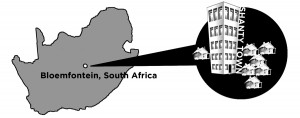Poorism diminishes tragedy of poverty
Among travel fads such as food-centric vacations and eco-tourism, one new trend stands out for its blatant disregard and lack of respect for local residents. Slum travel, or “poorism,” is an alarming and hopefully short-lived travel fad where tourists “play poor” in some of the world’s most poverty-ridden cities. Despite arguments that these tourists boost the local economy, poorism does not solve the issue of poverty. Investors should concentrate on building the local economy, not romanticizing the idea of poverty.
According to The New York Times, the term “poorism” comes from a combination of the words “poverty” and “tourism.” Tourists seeking “authentic” experiences pay for guided tours of real-life slums or the opportunity to stay in a stylized shantytown. Yet, this voyeuristic fascination with how the other half lives is nothing new. Even in the late 1800s, people were curious as to how others experienced poverty. Jacob Riis’ book, How the Other Half Lives, provided a portrait of life in the tenement buildings of Manhattan’s Lower East Side. Unlike the current fascination with poverty, this book helped spark social change and encouraged progressive reform.
Unfortunately, this current fascination with poverty does not have such progressive tinged roots. According to United Press International, this poorism trend most likely stems from media’s idealized representation of slums and the widening wealth gap in the United States. The article cites movies and documentaries that present a romanticized view of poverty, such as Slumdog Millionaire and Favela Rising. Additionally, the widening wealth gap in the United States means that the well-to-do rarely come in contact with the impoverished. This growing concentration of wealth, which the Occupy Wall Street movement drew attention to, contributes to this curiosity to experience poverty. The more removed people are from the issue of poverty, the easier it becomes to romanticize the concept.
Investors capitalize on this trend by tailoring tours and hotels to suit tourists’ idea of poverty. The Emoya Luxury Hotel and Spa, in Bloemfontein, South Africa, offers a shantytown for guests who want to play poor for the night. The hotel’s website, seemingly without irony, invites tourists to “[stay] in a Shanty within the safe environment of a private game reserve. This is the only Shanty Town in the world equipped with under-floor heating and wireless internet access!” Yet, this faux-shanty experience is not the worst of the poorism industry.
The Reality Tours and Travel company offers Slum Tours of Dharavi, India. According to Smithsonian Magazine, Dharavi is the largest slum in Asia, with more than a million people living in tightly packed conditions. The Reality Tour claims its mission is to dispel stereotypes and promote understanding; the tours, however, undeniably depict poverty as a spectacle. As the Times Now panel moderator described in the Smithsonian, slum tourism “is a clear invasion of somebody’s privacy,” and reduces impoverished people to spectacles. As the article later describes, these people have little choice in the matter. They barely have the resources to sustain themselves, let alone prevent outside agencies from arranging slum tours.
This tourism is not confined to so-called “Third World countries.” According to United Press International, Louisiana became a poorism destination following the devastating Hurricane Katrina in 2005. These slum tours routinely take advantage of struggling communities for the benefit of rich tourists. Instead of breaking down barriers between tourists and locals, it encourages outsiders to view the slums as yet another tourist attraction. The people living in real-life poverty become mere actors on a stage. Even though tourists might feel compassion or sympathy for the people they encounter, these slum tours are an inadequate way of truly helping the destitute.
Rather than merely witnessing inequality and poverty, tourists should focus on sustainable tourism that produces lasting, positive impacts on the local community. Though poorism and slum tours undoubtedly generate profit, most of the money flows away from the communities begin exploited.
Even the “green” enterprise of eco-tourism does not provide lasting benefits for locals. In Eco-Tourism: An Ecological and Economic Trap for Third World Countries, author Anita Pleumarom explains that tourism can actually increase a community’s debt burden by creating an economy based solely on tourism. Though tourism encourages areas to improve infrastructure, such as roads, these developments mainly benefit tourists. Pleumarom describes over-reliance on tourism as “a new bubble economy … emerging in villages,” and instead advocates for community-based tourism projects. Poverty alleviation must come from grassroots initiatives, not a dependence on foreign dollars.
In order to make a positive impact, the focus should be on making an area a desirable place to visit, not creating a spectacle from poverty. Poorism neither builds up the local community nor treats impoverished people with respect. This parasitic industry is clearly part of the problem, not the solution. Even though there is no single solution to poverty, microfinance and community-based projects provide a viable option. Microfinance provides small loans to promising enterprises in impoverished communities. These loans allow individuals to build their business and bolster the local economy in a sustainable manner. Furthermore, programs such as World Vision are designed to help a community build the infrastructure it needs to succeed create a local economy. Unlike tourism-based economies, which rely on foreign money, these funds help communities become self-sufficient.
Vacations are an ideal time to experience new cultures, exotic cuisines and breathtaking scenery, but these experiences should not infringe upon the dignity of others. The slum tourists who fail to see the irony in the poorism industry are contributing to the romantic notion of poverty, not helping to alleviate it.
Veronica An is a sophomore majoring in narrative studies.
Follow us on Twitter @dailytrojan

